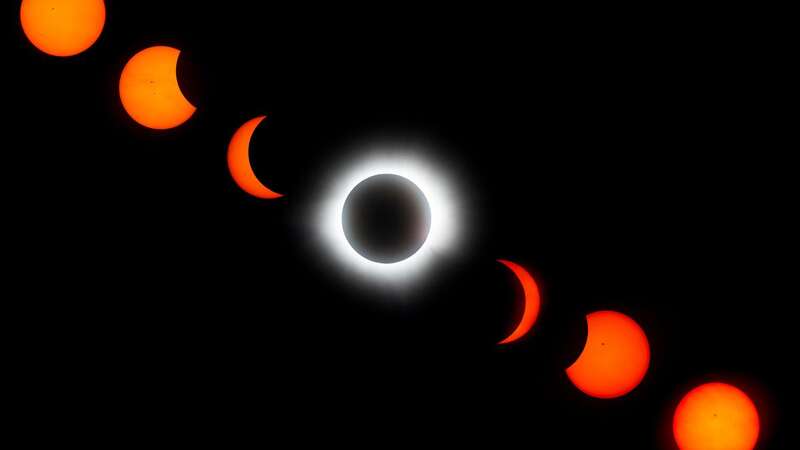People who missed this year’s solar eclipse can rest easy as the next instance of the cosmic ballet is only a few years away.
More than 30 million people in the US watched in awe as the moon passed in front of the sun on Monday. The eclipse made its way over to North America at around 1.15pm, starting in Texas and moving across towards the east coast. The precise alignment of the sun, moon and Earth is known as a full total eclipse and happens every three years.
As a result, people will be able to see the next incredible event in 2026 when it passes over the the northern fringes of Greenland, Iceland and Spain. However the next time it happens over the US will be in 2033 in Alaska and will also pass over Russia but there won’t be another coast-to-coast spectacle on the continent until 2045.
Crowds gathered along the country’s Pacific coast, with the trajectory of the eclipse racing toward the US and eastern Canada before ultimately exiting into the Atlantic. The Mirror's news reporter Jeremiah Hassel was at the Niagara Falls State Park where over 1,000 people gathered to witness the eclipse. He described how, as the total solar eclipse approached, the temperature dropped, and birds began to settle "as if to turn in for the night."
"At exactly 3.20pm EDT, the moon completely covered the sun. In a matter of seconds, the sky darkened, and night fell over the park as buildings on the Canadian side began to light up. It was as if dusk had fallen early. The crowd oohed and ahhed, clapping and cheering as the eclipse occurred. For a few moments, things were still as a mesmerised crowd observed the rare celestial phenomenon. Then it was as if the sun was rising again - rays of sunshine spilled through the clouds that still covered the skies above the park, and light returned to the area as people cheered once again. The eclipse was over."
 Over 100 meteors will be visible in the sky above the UK for incredible display
Over 100 meteors will be visible in the sky above the UK for incredible display
Other celestial events this year include the Lyrids meteor shower, which will be active from April 15-29, with the peak happening starting late evening April 21 into April 22. Lyrids is a medium strength shower that can produce a number of meteors including some fireballs. But for 2024, the moon may make it difficult to see this light show.
The Eta Aquariids meteor shower also starts on April 15, but it won't be until May for peak viewing. The best mornings to watch are May 5 and 6, in the hours before dawn. And it puts on quite a show in the southern part of the U.S. Viewers could see 10 to 20 meteors per hour under a dark sky, with no moon. The Perseid meteor shower will rain shooting stars, while star gazers can also look forward to a partial lunar eclipse in September and an annular solar eclipse in October. According to Space.com, the next lunar eclipse with be a partial one on Sept. 17.
Read more similar news:
Comments:
comments powered by Disqus


































